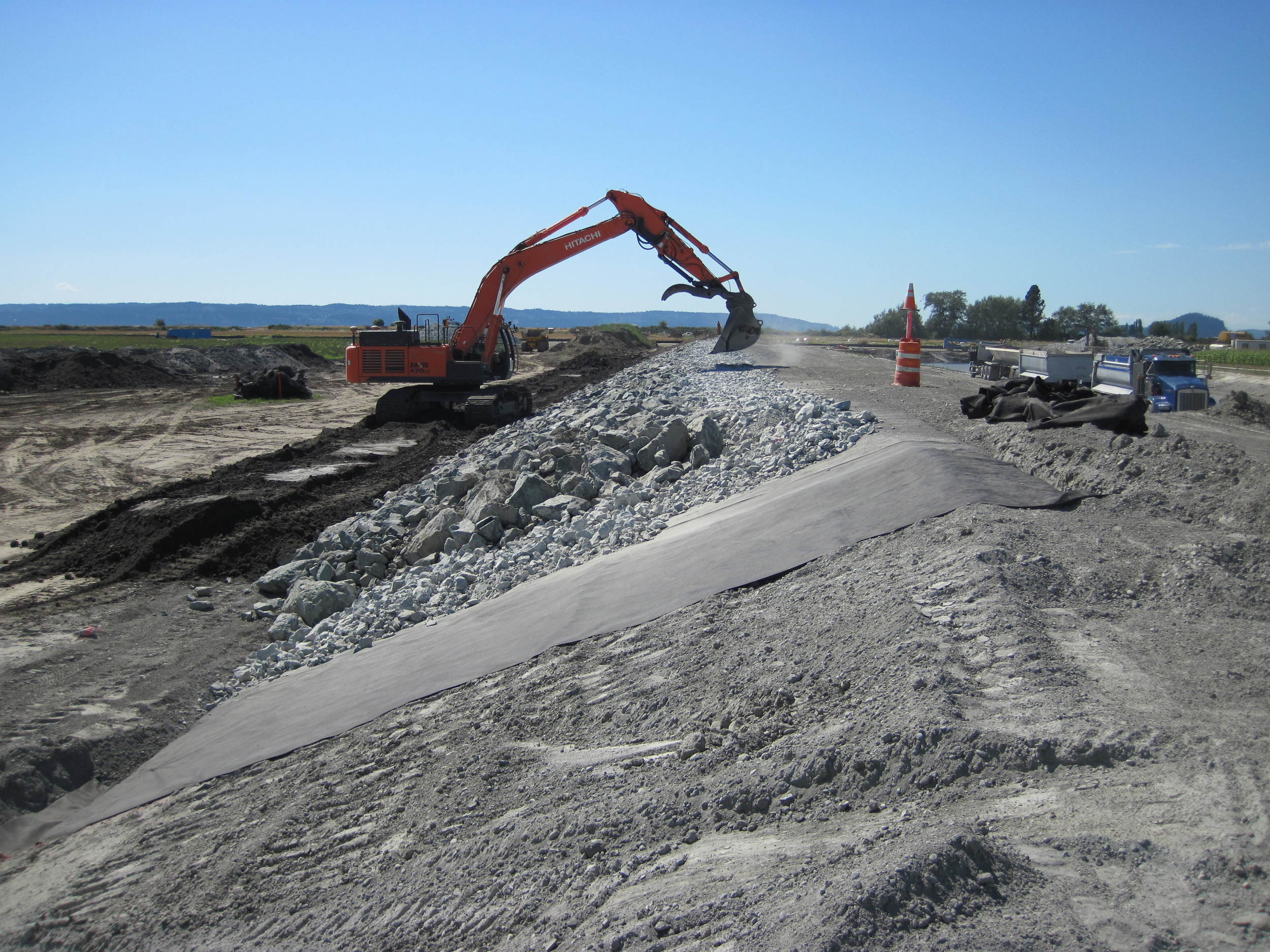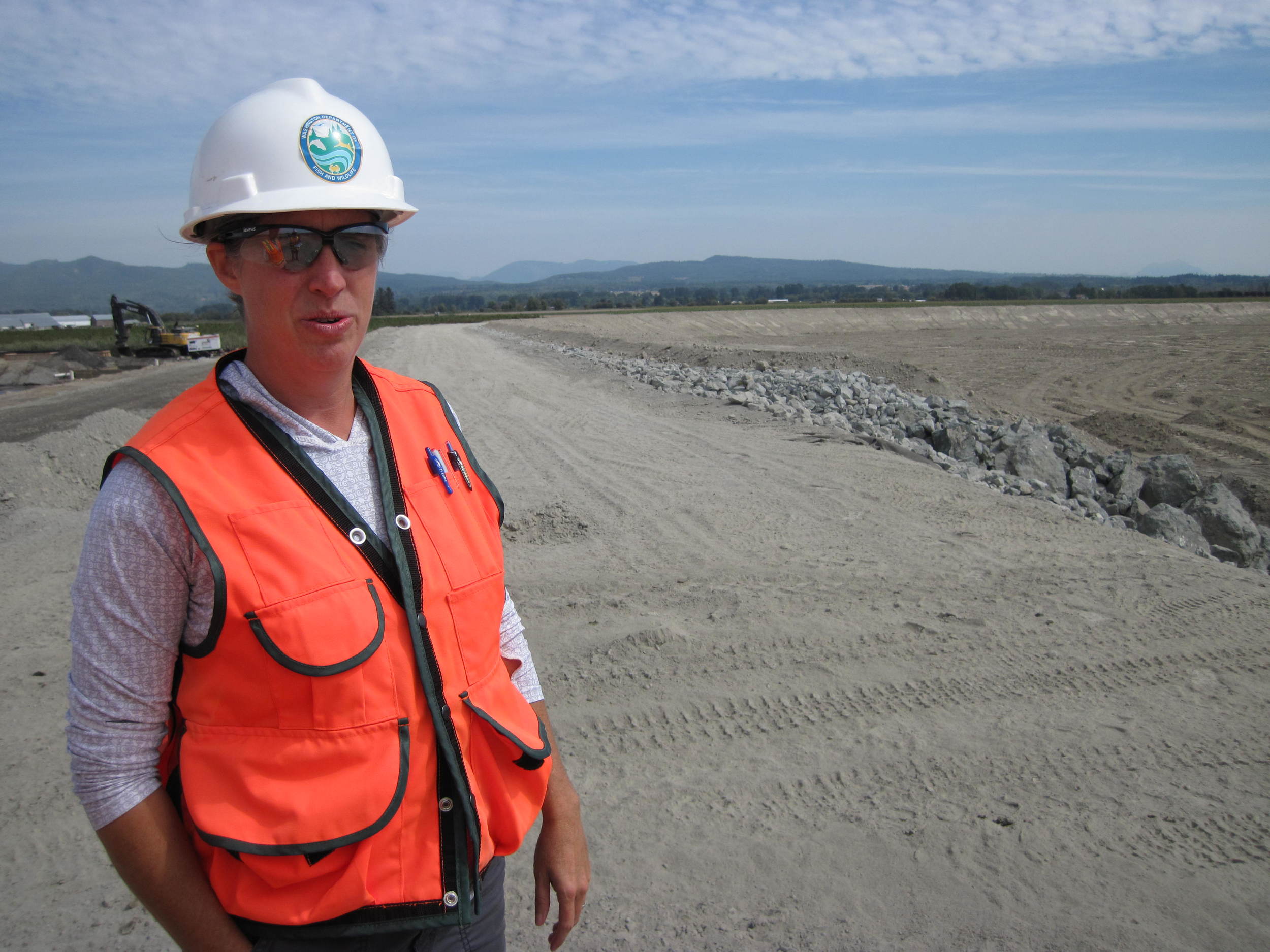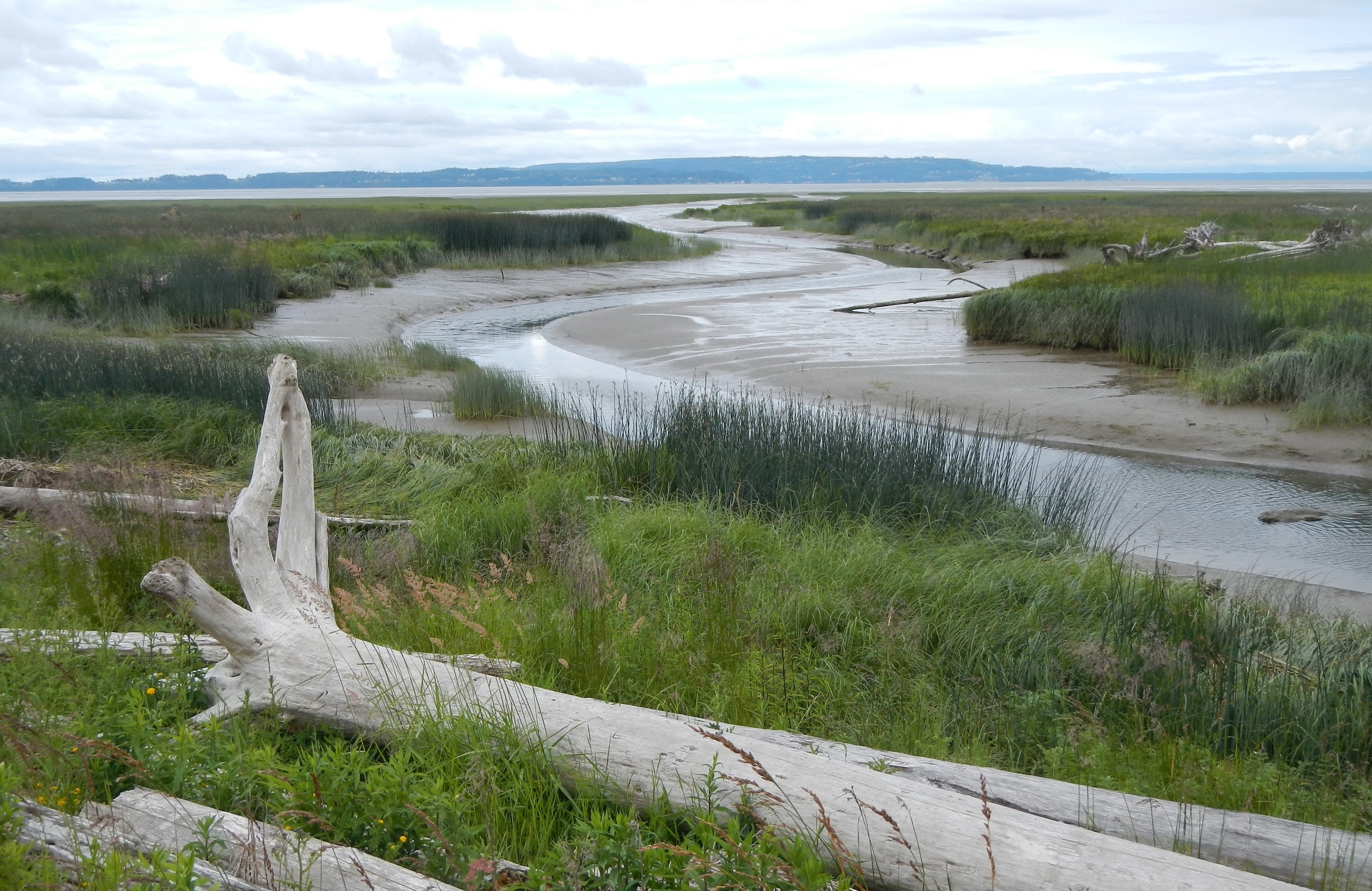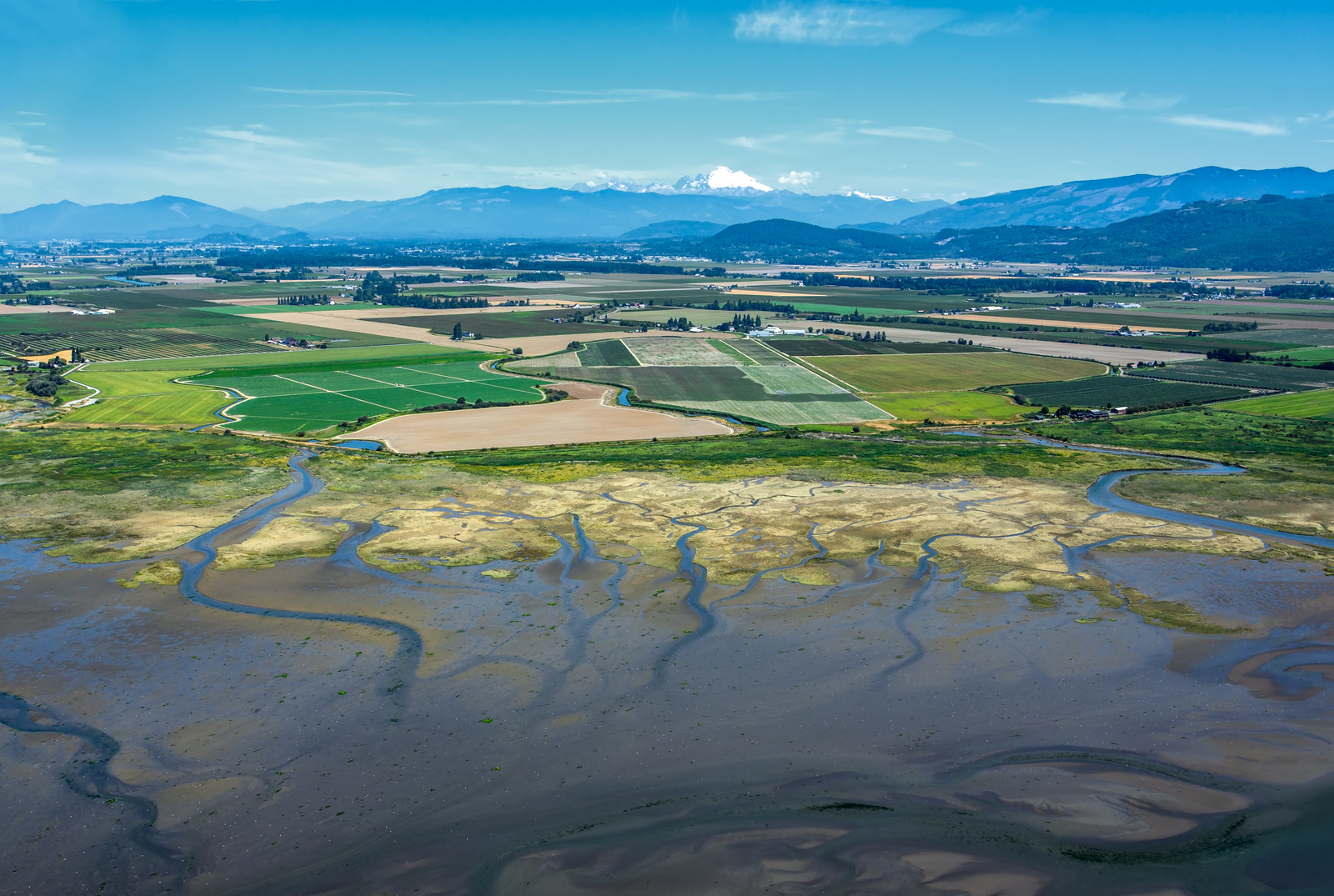Written by Beth Geiger
Photographs by Jenny Baker, Senior Restoration Manager
A tiny juvenile salmon swims down the Skagit River toward Puget Sound. The finger-sized fish finally arrives in the tidal reaches of the lower Skagit. It’s a big world of water and fields. Saltwater is just a splash away.
Next to the river, on Fir Island, farmers work some of the world’s most fertile agricultural land. In winter, thousands of migrating snow geese arrive in noisy white clouds. The scene is framed by snowy vistas of Mt. Baker to the east and verdant islands of Puget Sound to the west. It’s a beautiful place.
Yet for this little salmon, something critical is limited: a shallow estuary where it can grow, feed, and hide before entering the deep, exposed waters of Puget Sound. Century-old dikes built to keep floods and tides off the land to make farming the Skagit delta possible eliminated much of the estuarine marshes this young fish needs. Science tells us that restoring tidal estuaries is key to helping revive Chinook salmon populations in the Skagit watershed.
In a partnership with TNC, the Fir Island Farm project, managed by the Washington Department of Fish and Wildlife (WDFW), aims to do just what science tells us is needed for salmon, but in a collaborative way that also pays homage to the current agricultural productivity of this great place.
Most food is produced hundreds, sometimes thousands of miles from where it is consumed. That requires significant energy consumption, and it leaves communities at risk if the food supply chain becomes challenged. Preserving and enhancing farm productivity means preserving our ability to have local, sustainable fruits and vegetables now and in the future.
This is a complex system, in a critical landscape with lots of public and private interests at play – which is exactly The Nature Conservancy’s wheelhouse. No wonder this project is a balancing act. Balance estuaries for juvenile salmon with improved protection for farmland. Balance nature with community, farmers, and recreation.
The Conservancy is a critical partner in navigating this complex task. We contribute our expertise and “lessons learned” from projects that set the stage for this project, including nearby Fisher Slough. That project was managed by the Conservancy and completed in 2011.
This experience and others have taught us the importance of partners such as Consolidated Diking and Drainage District 22, which helps keep Fir Island’s farms dry. “The Conservancy was instrumental in encouraging us to talk to the Diking District early in the process,” says Jenna Friebel, Fir Island project manager for the WDFW. The Diking District, Friebel says, brought essential ideas to the project planning table, such as what type of tide gates and pumping station would work best.
In 2015 the Fir Island Farm project constructed 5,800 feet of brand new dike inland from the old dike, on a parcel of former farmland now owned by the Department of Fish and Wildlife. This summer the old dike will be removed, tides will flood in, and 131 acres will become a new tidal marsh.
By spring of 2017, tens of thousands of tiny Chinook salmon coming down the Skagit will find a safe haven, and a better future. “If the habitat is there, they can grow bigger and ready for the ocean,” says Friebel. At the same time, the future of farming here is preserved as well.































